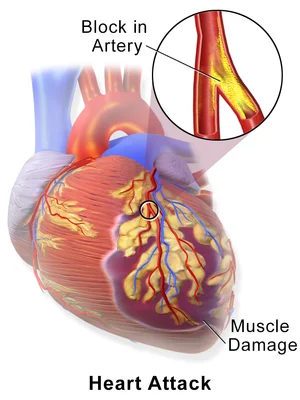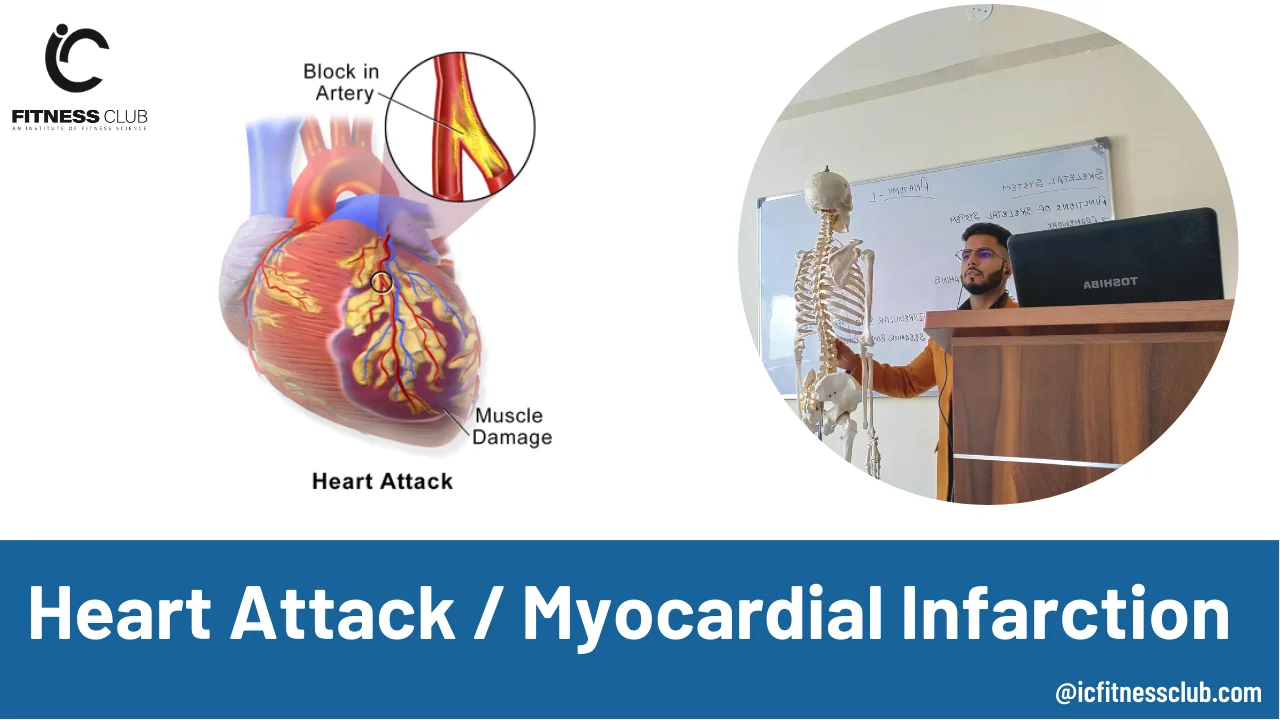Heart Attack – IC Fitness Club
A heart attack, also known as a myocardial infarction (MI), occurs when there is a blockage in the blood vessels that supply oxygen-rich blood to the heart muscle. This blockage can occur due to the buildup of plaque or a blood clot.
The symptoms of a heart attack can vary, but the most common symptoms include:
- Chest pain or discomfort: This may feel like pressure, squeezing, fullness, or pain in the center of the chest that lasts for several minutes or comes and goes.
- Shortness of breath: This can occur with or without chest pain and may occur before or during chest discomfort.
- Pain or discomfort in other areas of the upper body: This can include pain or discomfort in one or both arms, the back, neck, jaw, or stomach.
- Sweating, lightheadedness, or nausea: These symptoms can occur with or without chest pain.

Causes of Heart Attack
There are several factors that can contribute to the development of a heart attack, including:
- Coronary artery disease (CAD): This is the most common cause of a heart attack. CAD occurs when the arteries that supply blood to the heart become narrowed or blocked by a buildup of plaque.
- High blood pressure: High blood pressure can damage the arteries over time, making them more likely to narrow or become blocked.
- Smoking: Smoking can damage the lining of the blood vessels and cause them to narrow, which increases the risk of a heart attack.
- Diabetes: People with diabetes are at an increased risk of developing heart disease, which can lead to a heart attack.
- Family history: If someone in your family has had a heart attack, you may be at an increased risk of developing one yourself.
- Obesity: Being overweight or obese can increase the risk of developing heart disease and having a heart attack.
- Physical inactivity: Lack of regular exercise can contribute to the development of several risk factors for heart disease, including high blood pressure, high cholesterol, and obesity.
- Stress: Chronic stress can contribute to the development of heart disease by increasing inflammation in the body and raising blood pressure.
- Age and gender: The risk of a heart attack increases with age, and men are more likely than women to have a heart attack.
How Plaque is formed in the Artery
When we eat excessive refined carbohydrates they Increase blood sugar by at least 10x. This leads to less viscosity of the blood and blood becomes thick. The thick blood and the Body’s Mechanism to transport the excess blood sugar and triglycerides leads to high blood pressure which ultimately rubs against the inner lining of the artery.
Thus due to the roughness in the inner lining of the artery, Triglycerides, and other substance begins to stick to it. This process is known as Atherosclerosis.
Atherosclerosis begins with damage to the inner lining of the artery, which can occur due to several factors, including high blood pressure, smoking, and high levels of LDL (low-density lipoprotein) cholesterol in the blood. When the inner lining of the artery is damaged, inflammatory cells, including white blood cells, rush to the site of the injury to repair the damage.
Over time, these inflammatory cells begin to accumulate Triglycerides and excess blood sugar, forming a fatty streak inside the artery. As the fatty streak grows, calcium and other substances begin to accumulate, forming a hardened plaque.
The buildup of plaque can narrow the artery, reducing blood flow and increasing the risk of a heart attack or stroke. In some cases, the plaque can rupture, causing a blood clot to form, which can also lead to a heart attack or stroke.
Reducing the risk of plaque buildup in the arteries involves making lifestyle changes, including eating a healthy diet, exercising regularly, quitting smoking, and managing conditions such as high blood pressure and high refined carbohydrate intake.




